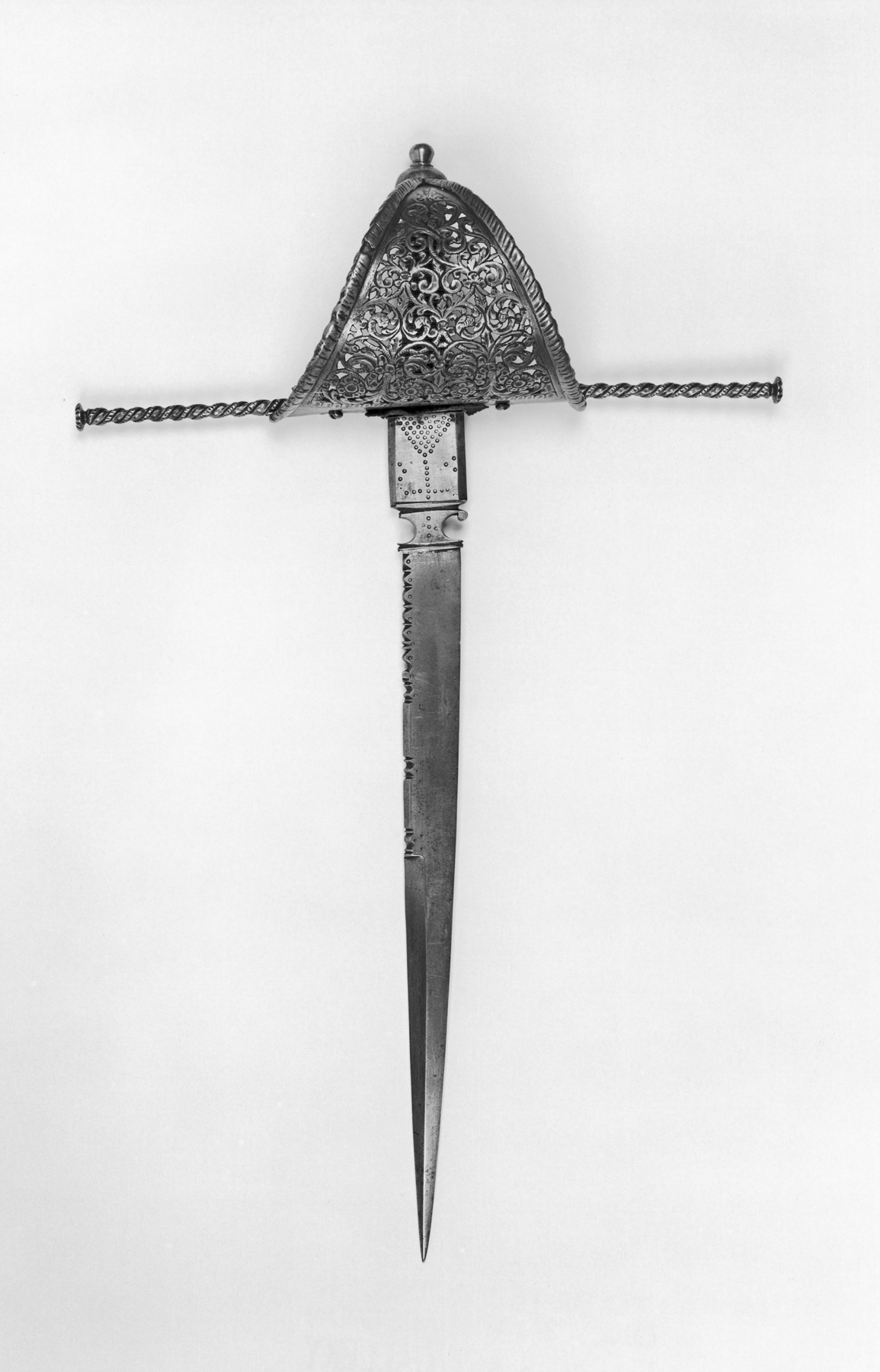Parrying Dagger
This dagger has a short, pointed, double-edged blade. It was attached to the sword belt and worn on the right hip with the sword on the left. Following the new tactics in swordsmanship of the late 1500s, the dagger was wielded by the left hand with a light sword or rapier in the right. New forms evolved to accommodate this parrying function: long crossguards, a side ring, and prongs parallel to the blade to protect the fingers and catch or block an opponent's sword.
This type of dagger, with its large, triangular, convex guard with a raised rim to deflect the opponent's blade, was developed in Spain but produced in Italy in the mid-1600s to accompany cup-hilted rapiers such as Walters 51.501. Like the rapiers, they were intricately decorated with chiseling and piercing.
Provenance
Provenance (from the French provenir, 'to come from/forth') is the chronology of the ownership, custody, or location of a historical object. Learn more about provenance at the Walters.
Sale, American Art Association, New York, November 8, 1921 (?); Hollingworth Magniac (1786-1867), Colworth, Bedford [date of acquisition unknown], by purchase; Charles Magniac, Colworth, 1867, by inheritance; Sale, Christie's, London, July 2 or 4, 1892, no. 1009; Samuel H. Austin, Philadelphia [date and mode of acquisition unknown] (?); Sale, New York, February 24, 1917, no. 596; Harding, 1917 [mode of acquisition unknown]; Henry Walters, Baltimore, 1917 [mode of acquisition unknown]; Walters Art Museum, 1931, by bequest.
Geographies
Italy (Place of Origin)
Measurements
20 1/4 in. (51.4 cm)
Credit Line
Acquired by Henry Walters, 1921
Location in Museum
Accession Number
In libraries, galleries, museums, and archives, an accession number is a unique identifier assigned to each object in the collection.
In libraries, galleries, museums, and archives, an accession number is a unique identifier assigned to each object in the collection.
51.517


